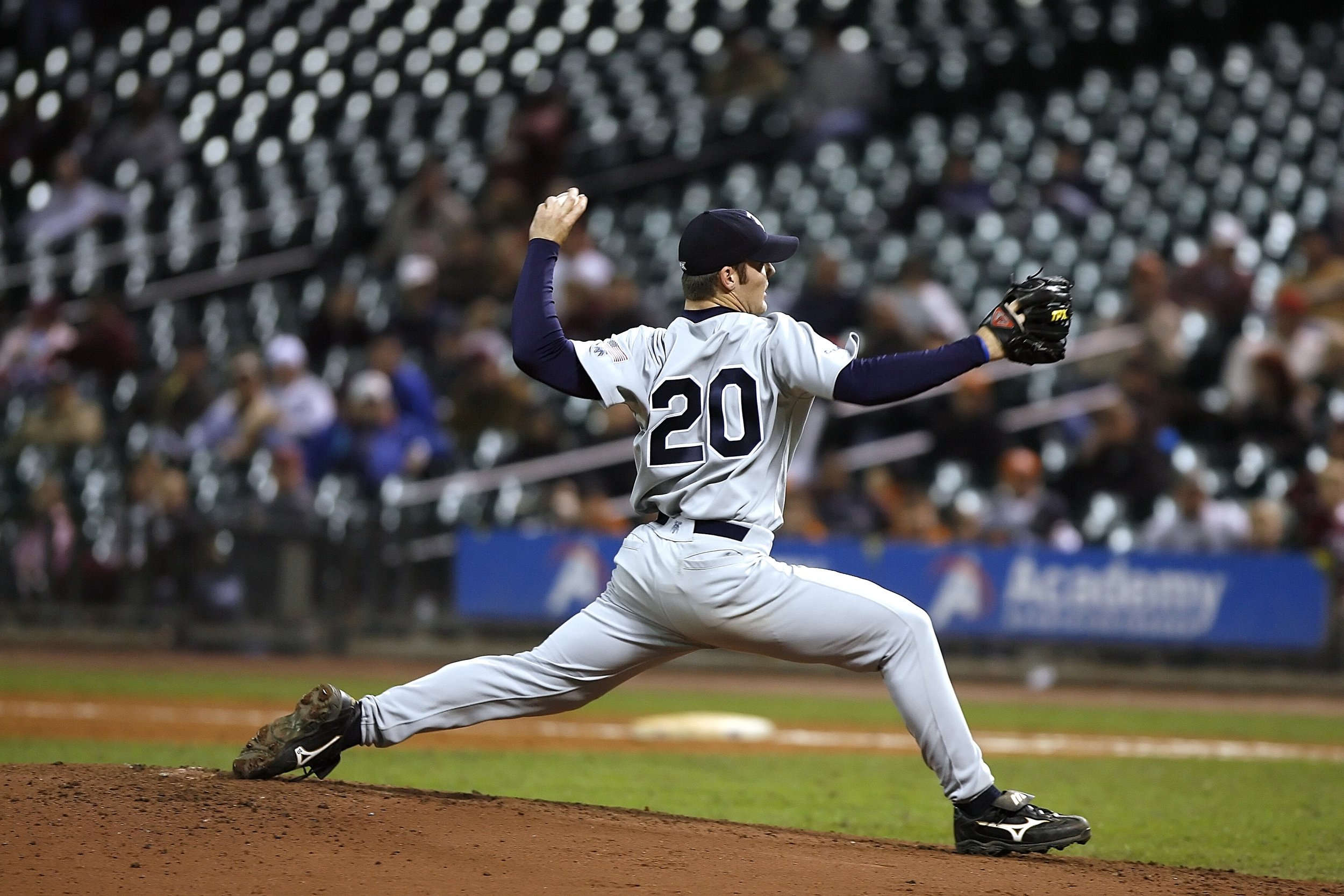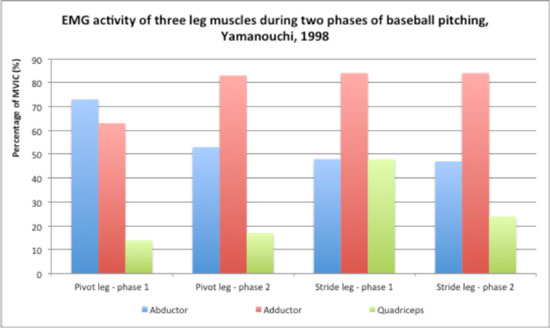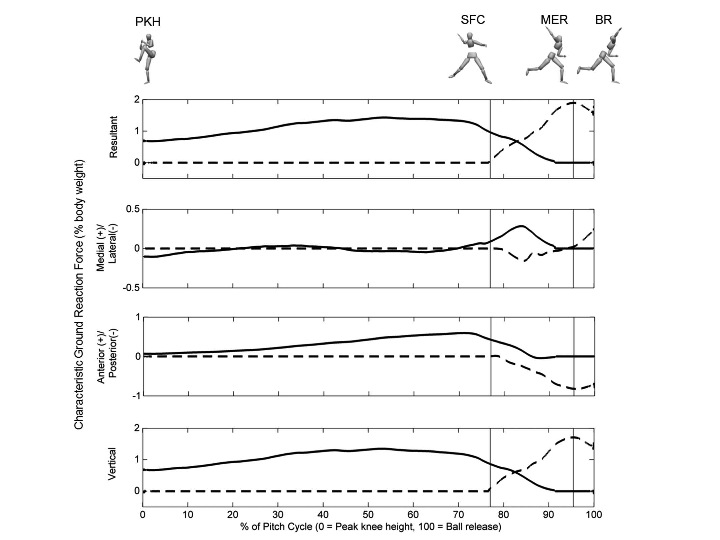In our practice, we commonly see adolescent baseball athletes suffering from shoulder and elbow injuries. On average 1 in 2 youth throwers will develop arm injuries and on average major league throwers lose 22 days per season due to arm injury (Conte et al. 2001). These injuries are mainly overuse in nature secondary to muscle imbalances, skeletal immaturity in youth, and poor pitching mechanics. In particular, the majority of these athletes are throwing primarily with their arms and not taking advantage of the power generated by the lower body during the pitching sequence. Injured throwers may also present with lower extremity weaknesses leading to increased arm stresses during pitching.
Baseball pitching is a whole body movement pattern requiring coordinated movement and strength from multiple joint regions in legs and arm described as the kinetic chain. In pitching, the kinetic chain allows the transfer of power through a series of body regions from the feet through the throwing hand (Pappas, 1995). Kibler et al. stated proximal stability (foundation) allows for effective distal mobility and acceleration of the arm (2006). Effective utilization of the kinetic chain is responsible for fastballs exceeding 100 mph. Major league throwers with the highest velocity, accuracy, stamina, often have the greater leg strength and power compared with lessor pitchers.
Prior research has demonstrated up to 50% of a thrower’s velocity is produced by the lower body (Calbrese et al. 2013). We also know the utilization of this strength in a pitching movement, either a lateral or forward hop, is directly related to pitching velocity (Lehman et al. 2013, Nakata et al. 2013). Clearly the strength and movement produced by the legs improves the ability of the arm to produce forces and movements needed in baseball.
A recent article in the Journal of Strength and Conditioning Research examined if stride forces between the foot and the ground could predict pitching velocity (McNally et al. 2015). The authors found contact forces during the cocking and acceleration phase of the throw was associated with increased ball velocity by the pitchers. The throwers with the highest ground reaction forces were able to produce the fastest throws.
In short, a thrower with inadequate leg strength and mechanics is at higher risk for arm injury and limited effectiveness on the mound.



